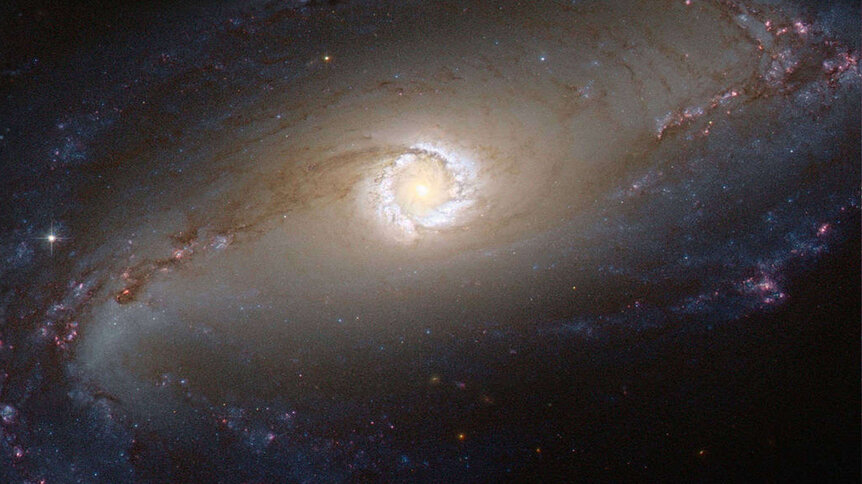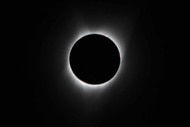Create a free profile to get unlimited access to exclusive videos, sweepstakes, and more!
Could the primordial ingredients of life be on their way to planets forming right now?

When Earth was forming billions and billions of years ago, much of its life-giving carbon supposedly came from the edge of the solar system. Star systems that are just emerging now may not be that different.
Our planet would have never evolved to be what it is without carbon dioxide that formed in the distant reaches of the solar system, where it was cold enough for it to freeze. Carbon monoxide also needs to form in a space freezer. Yes, CO on its own can be lethal (at least to us), which is why we have carbon monoxide detectors that start shrieking uncontrollably when too much is in the air, but scientists have found that an environment cold enough for it to form and attach to hydrogen atoms is giving an embryonic star system methanol. Meaning, what can take life could eventually spawn life.
Astronomer Alice Booth of Leiden University in the Netherlands, who led a study recently published in Nature Astronomy, and her research team have found the first evidence of methanol (CH3OH) that survived the transition from a deep freeze to a warm star-forming disc—and it’s a lot of methanol.
“The only efficient way to make methanol is on the icy surfaces of dust grains. For this to happen, carbon monoxide gas also needs to be frozen,” Booth told SYFY WIRE. “The disc we looked at is ‘warm’, over 30 Kelvin (-405.67 Fahrenheit). CH3OH can’t form in the disc itself. The cold dark cloud that was there before the star formed is where we think the methanol came from.”
Your fridge couldn’t possibly get carbon monoxide down to the temperature it needs to be at in order to form on cosmic dust. It needs to be 20 Kelvin (a bone-chilling -423.67 Fahrenheit). As hydrogen atoms bond with CO on those grains of dust, it morphs into methanol. Planetary discs don’t just materialize out of nowhere. They first go through a cold phase before things start heating up. The disc that Booth and her team observed may be in its warm phase now, if you can call 30 Kelvin warm, but started out as a cold cloud of gas and dust. Its methanol formed in an earlier phase of the system rather than being sent over from somewhere else like Earth’s carbon was.
Methanol is something of an oxymoron because it is one of the most basic complex molecules that exists. It is also believed to be prebiotic, or involved in creating proteins and amino acids that make up the DNA and RNA which write the chemical codes needed for living organisms. The presence of so much methanol in this disc, where planets and the star they will eventually orbit are still forming, might mean that it has the other ingredients necessary for what could eventually become some sort of life-forms.
“Lots of research shows that CH3OH is a necessary precursor molecule to form more complex prebiotic molecules,” Booth said. “So if there is CH3OH present, then the disk should have the key building blocks for life. Then inheritance means this should be universal for all disks but we need more data to confirm this.”
If the presence of methanol passed down from the previous phase of a star-and-planet-forming cloud really is a sign that the other ingredients for life are also floating around somewhere in there, it could have huge implications in the search for planets beyond Earth that might be crawling with living things. We obviously can’t wait around at a telescope for several billion years until everything falls into place out there. What scientists can do, however, is gather data that could be evidence for how exoplanets formed. If there is evidence for the same kind of formation that is going on in that faraway disc now, they could be onto something.
Booth believes that more observations could reveal whether or not there really is a process that leads to the emergence of life. Comets might have a few answers, which is why she wants to continue observations on the disc and then compare the amounts of life-giving elements and molecules there to those on comets. The carbon and water ice brought to Earth by comets from the outer solar system, where carbon monoxide and carbon dioxide can freeze, could let us in on at least some secrets that the universe has been keeping.
“Since we think comets were fundamental to bringing water and organic material to the early Earth, seeing how similar or different they are can tell us how this material is processed during the evolution of the disk and the time where planets are forming,” she said.
Whether these ingredients end up forming life as we know it or life as we never imagined it is another mystery.















